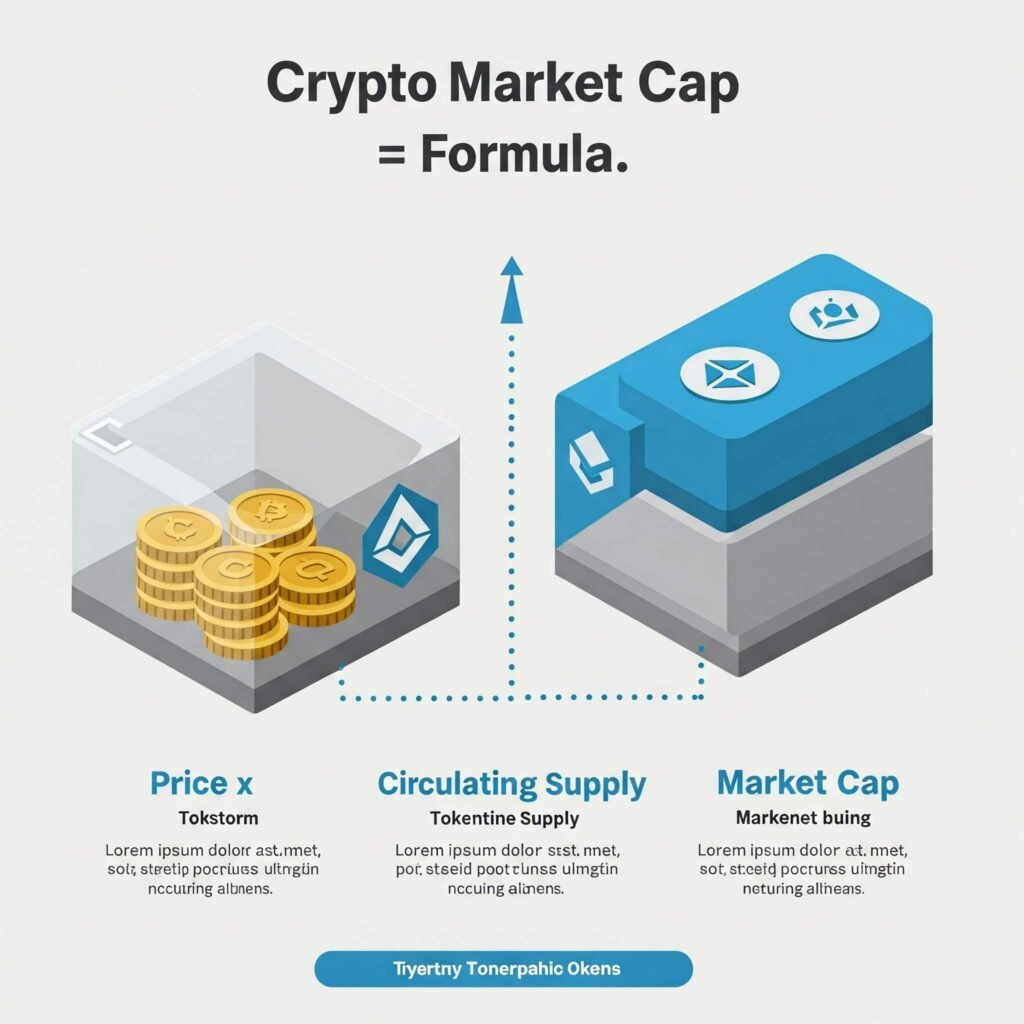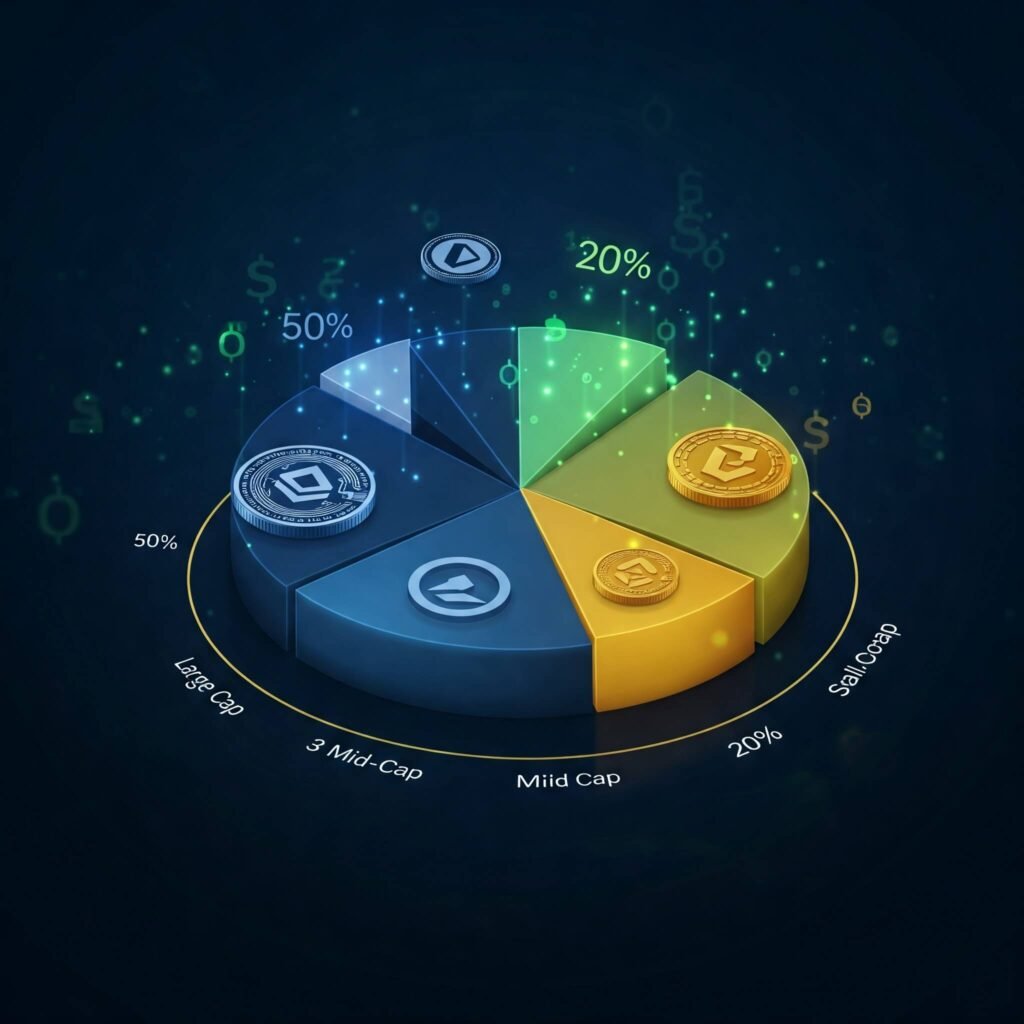The crypto market cap is the heartbeat of the cryptocurrency world, reflecting the total value of all coins in circulation. If you’re new to crypto or a seasoned investor, understanding cryptocurrency market capitalization is crucial for making informed decisions. It’s not just a number—it’s a window into the health, popularity, and potential of digital currencies. In this guide, we’ll break down why crypto market cap matters, how it’s calculated, and why it’s a game-changer for your investment strategy.
What Is Crypto Market Cap?
Cryptocurrency market capitalization represents the total value of a cryptocurrency, calculated by multiplying the current price of a single coin by its circulating supply. For example, if a coin is priced at $100 and has 1 million coins in circulation, its market cap is $100 million.
This metric is a snapshot of a cryptocurrency’s size and influence in the market. Platforms like CoinMarketCap and CoinGecko provide real-time crypto market caps rankings, helping investors track trends.
Why Crypto Market Cap Matters
- Measures Market Influence: A higher market cap often signals a more established and trusted project, like Bitcoin or Ethereum.
- Guides Investment Decisions: Comparing market caps helps you assess a coin’s growth potential versus its competitors.
- Reflects Investor Confidence: Rising market caps indicate growing demand and trust in a cryptocurrency.

How Crypto Market Cap Influences Investment Choices
When building a crypto portfolio, crypto market caps is a critical factor. It helps you balance risk and reward by categorizing cryptocurrencies into three main tiers:
- Large-Cap Cryptos (e.g., Bitcoin, Ethereum): Market caps above $10 billion. These are safer bets with lower volatility but slower growth.
- Mid-Cap Cryptos (e.g., Cardano, Solana): Market caps between $1 billion and $10 billion. These offer a mix of stability and growth potential.
- Small-Cap Cryptos (e.g., new altcoins): Market caps below $1 billion. High-risk, high-reward options with significant volatility.
For instance, Bitcoin’s market cap of over $1 trillion (as of April 2025) reflects its dominance, while smaller coins like Avalanche might appeal to risk-tolerant investors chasing exponential gains.
Actionable Takeaway
Diversify your crypto investment by allocating funds across large-, mid-, and small-cap coins to balance stability and growth.

Crypto Market Cap vs. Other Metrics
While crypto market caps is a vital metric, it’s not the only one you should consider. Here’s how it stacks up against other indicators:
- Trading Volume: Shows how actively a coin is traded. High volume with a rising market cap signals strong demand.
- Circulating Supply vs. Total Supply: A coin with a low circulating supply but high total supply may face future dilution, impacting its market cap.
- Price Trends: A coin’s price can spike without a significant market cap increase if its circulating supply is low.
For example, Dogecoin’s market cap surged in 2021 due to social media hype, but its unlimited supply limited long-term growth compared to capped coins like Bitcoin.
Why This Matters
Relying solely on crypto market cap can be misleading. Combine it with other metrics for a holistic view of a project’s potential.
The Bigger Picture: Crypto Market Cap and Market Trends
The total crypto market cap—the sum of all cryptocurrencies’ market caps—reveals broader crypto market trends. In April 2025, the global crypto market caps hovers around $2.5 trillion, reflecting renewed investor confidence post-2024 recovery.
Spikes in total market cap often align with bullish trends, driven by factors like:
- Regulatory clarity (e.g., U.S. approving crypto ETFs).
- Mainstream adoption (e.g., companies accepting Bitcoin payments).
- Technological advancements (e.g., Ethereum’s scalability upgrades).
Conversely, market cap dips can signal bearish phases, often triggered by regulatory crackdowns or macroeconomic shifts.
Real-World Example
In 2021, the crypto market caps soared past $3 trillion during a bull run fueled by institutional investments. However, 2022’s bear market saw it drop below $1 trillion, highlighting the market’s volatility.

Common Misconceptions About Crypto Market Cap
Despite its importance, crypto market cap is often misunderstood. Let’s debunk some myths:
- Myth 1: Higher Market Cap = Better Investment: A high market cap doesn’t guarantee returns. Small-cap coins can outperform large caps in bull markets.
- Myth 2: Market Cap Reflects Real Money Invested: Market cap isn’t cash invested but the theoretical value of circulating coins.
- Myth 3: Market Cap Is Static: It fluctuates with price and supply changes, requiring constant monitoring.
Actionable Takeaway
Use tools like Nansen or Glassnode to track crypto market cap trends and make data-driven decisions.
Why Crypto Market Cap Should Shape Your Strategy
Understanding crypto market cap empowers you to:
- Identify undervalued gems with growth potential.
- Avoid overhyped projects with inflated market caps.
- Stay ahead of crypto market trends by tracking total market caps shifts.
By combining market caps insights with other metrics like trading volume and on-chain activity, you can build a resilient crypto investment strategy.
Final Thoughts
Crypto market caps is more than a number—it’s a lens through which you can view the cryptocurrency landscape. Whether you’re diversifying your portfolio or chasing the next big altcoin, this metric is your guide to smarter investing. Start tracking market caps today, and let data drive your crypto journey.
Outbound Link: What Is Crypto Market Cap and Why Does It Matter?



